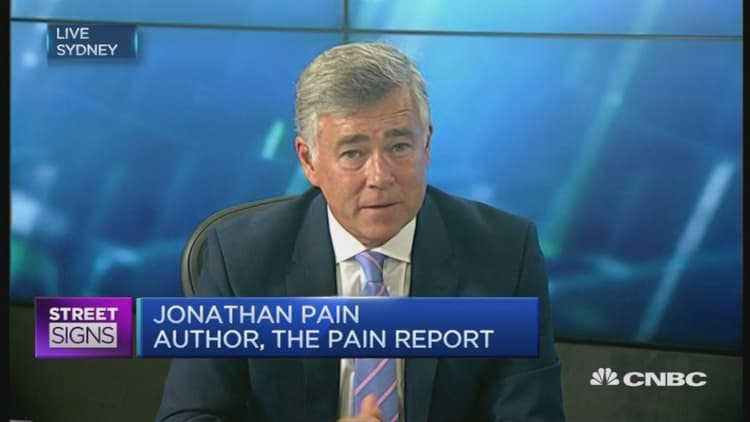After easing into a week on low trading volume, stocks will likely find momentum Wednesday afternoon with the scheduled release of the Federal Reserve's statement on monetary policy.
"We are at an inflection point here," said Tom Siomades, head of Hartford Funds Investment Consulting Group. "Things can go really well after Wednesday, or we can go back to the beginning of January or February."
The Federal Open Market Committee is due to conclude its two-day meeting on Wednesday with the 2 p.m. ET release of its statement and economic projections. Those include the highly scrutinized "dot plot," which shows the targets for appropriate federal funds rates by FOMC participants.
Fed Chair Janet Yellen is also scheduled to give a news conference at 2:30 p.m.
"We expect the updated dot plot will show a median of three hikes for this year (with a number of dots at two hikes) and four for 2017. In this sense, not hiking in March is similar to last September's 'tactical delay' of liftoff," Michael S. Hanson, senior economist at Bank of America Merrill Lynch, said in a Friday note.
The latest dot plot, from December, shows a target of four increases in 2016. Markets have been pricing in just one hike this year after the Fed raised rates in December.
"We're not expecting them to raise rates, so it's a question of how they communicate that decision and the balance of risks," said Luke Bartholomew, investment manager at Aberdeen Asset Management.
As of the close Tuesday, futures were pricing in a zero percent probability of a rate hike in March, and a 48 percent chance in June, according to CME's FedWatch tool.

Treasury yields turned higher in intraday trade Tuesday, with the hitting 0.972 percent, its highest since Jan. 8.
Chris Konstantinos, director of international portfolio management at RiverFront Investment, expects yields to move higher as the market starts pricing in more rate hikes.
"The market's 'dots' have to move closer to the Fed's dots, not the other way around," he said. "The fact the euro and yen have not been weakened (after their central bank moves), it helps the Fed to be slightly less dovish."
The euro climbed against the dollar to its highest in nearly a month after the European Central Bank's stimulus announcement last week and held just a touch below at $1.11 in late trade Tuesday. The dollar was 113.17 , as the Japanese currency held steady after the nation's central bank left rates unchanged this week.
The unexpected strength in the currencies after their respective central banks implemented further easing has raised concerns about the effectiveness of monetary policy.
Stock leadership for the year so far also illustrates market skepticism of how quickly the Fed can tighten in a global economic slowdown.
"Given staples, REITs and utilities have done well this year, people are being defensive. The economy is probably not growing as fast as the Fed expected when they first raised rates," said Matthew Spitznagle, senior equity analyst at Eagle Asset Management.
Telecommunications and utilities are up more than 10 percent year to date as the top S&P 500 performers, followed by consumer staples with gains of nearly 3.5 percent for the year so far. The Vanguard REIT Index Fund has risen nearly 1.9 percent year to date.
Stocks surged last Friday in a delayed reaction to the ECB decision, with the topping its 200-day moving average. The index fell slightly Tuesday, ending down 3.7 points to 2,015.93 with health care the biggest laggard. Monday marked the lowest trading volume day of the year so far, and Tuesday was tracking for a close second as of the close.
The Dow Jones industrial average recovered from an intraday 108-point dip to close up 22.40 points to 17,251.53, helped by a 2 percent gain in Apple. The Nasdaq composite fell modestly to 4,728.67 as the iShares Nasdaq Biotechnology ETF (IBB) plunged 3.8 percent for its worst day since Jan. 13.
"It's very in vogue for markets to say central bankers are out of ammunition," Konstantinos said, adding he thinks "the major central banks are really only limited by their will. I think it provides the backdrop for a volatile market environment. Central bank policy is difficult to predict."
"The potential gains are 'healthy' but the path there isn't 'healthy,'" he said.
A second-straight day of declines in key commodities such as oil and copper also weighed on stocks Tuesday.
The Fed and China play major roles in driving the future price of copper, said Dane Davis, commodities research analyst at Barclays.
Chinese Premier Li Keqiang is scheduled to hold a news conference at 10:30 p.m. ET Tuesday night to wrap up the National People's Congress.
However, Davis said: "There's a lot of bullish rhetoric out there. The issue of more stimulus is you have declining returns. So we think what China has said and what they're saying is going to have a muted effect on commodities. We haven't seen anything that really alters the story."
Oil could see more volatility around the U.S. Energy Information Administration's weekly inventory report due Wednesday morning.
U.S. crude oil futures settled down 84 cents at $36.34 a barrel, but pared losses in post-settlement trade after the American Petroleum Institute reported a smaller-than-expected rise of 1.5 million barrels in crude stocks, according to Reuters.
"Oil inventories will probably be closely watched but it's going to be the Federal Reserve first, economic news second," said Robert Pavlik, chief market strategist at Boston Private Wealth.
February reports on the consumer price index, housing starts and industrial production are due ahead of the Fed.
FedEx is scheduled to report earnings after the close Wednesday and will be scrutinized for insight into global economic activity.
After the close Tuesday, Oracle reported earnings of 64 cents a share that beat expectations by 2 cents, on revenue of $9.01 billion that missed projections slightly.


